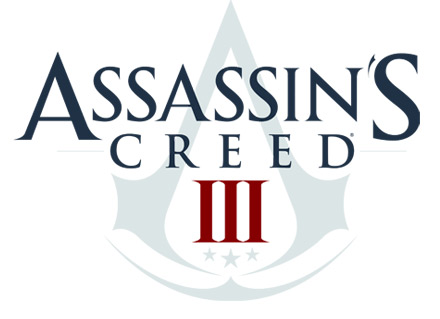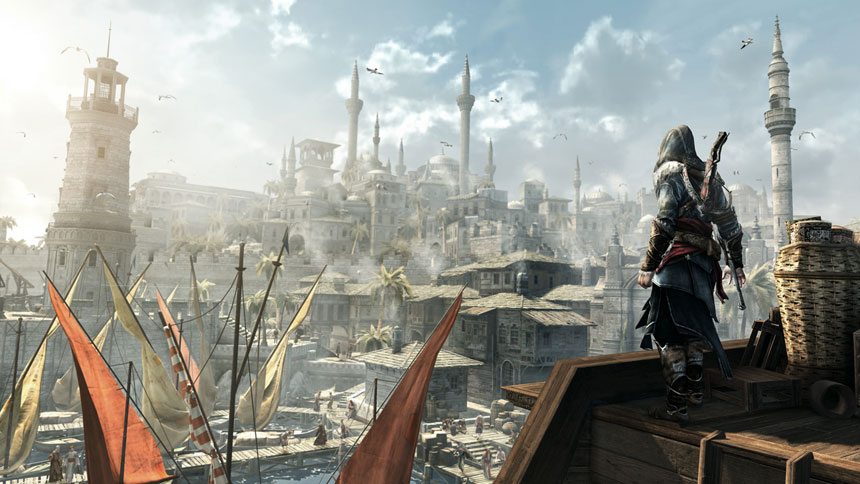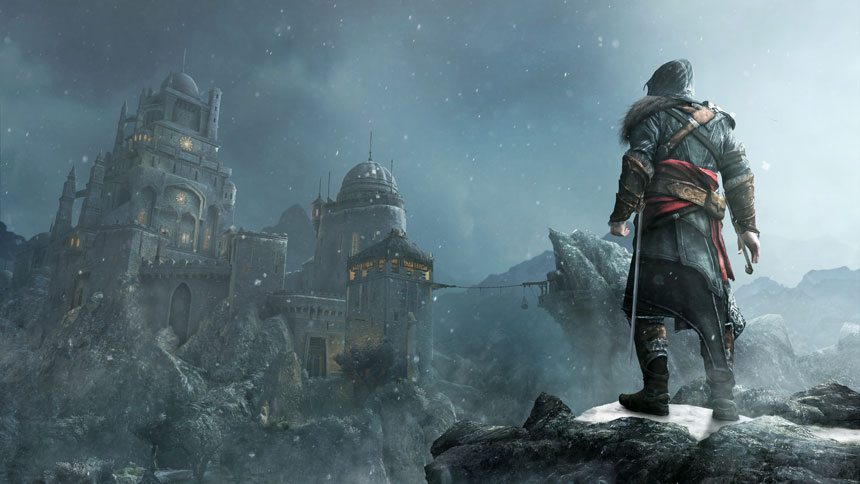
The story throughout this installment in the series is very easy to follow and makes sense. There is a twist at the beginning which throws many players off as it is unexpected and not a norm of the series. The game looks very good – the graphics are superb and help to create a sense of presence especially with the weather. Snowfall leads to slower movement, less animal activity for hunting and it is harder to see. Rain soaks through your clothing and it feels heavier, it is also difficult to see where you are climbing. Sunny days are the easiest weather to maneuver through as nightfall brings shadows and doesn’t allow you to see every possible path to take. The controls are easy to use and rather simple to learn. Players that are new to the series may need to read up on some of the controls because the tutorial does not explain everything. This is very surprising given that the first 30% of the game feels like a tutorial.
Assassins Creed III starts off gruelingly slow by adding a twist at the beginning, explaining Connor’s childhood and then preventing the use of the assassin outfit until Connor has proved himself. All of these tasks take a long time to complete and you won’t feel like the assassin Connor is until 1/3 of the game has past. Once you do get past that frustrating tidbit, the rest of the game is immersive and exciting. Boston and New York are the two cities that need liberation from British rule – and Connor is the man to do it. By liberating each area, a man or woman will join Connor on his quest to overtake the Templars. These become your assassins in-training which can be sent to any of the colonies to help liberate them. Living on the Davenport Homestead, Connor is in charge of bringing artisans to his community to help grow the homestead. With each artisan new crafts can be made, which can be sent on convoys to nearby stores and traders. Recipes for new crafts are also found in chests. Another collectible throughout the frontier are feathers, although an exact use for them in-game has yet to be discovered. Now, in my opinion, the best addition to the Assassins Creed series is the naval portion. Connor helps a man names Faulkner to rebuild a ship. This ship Connor uses on a couple of story missions to destroy Templar ships. Connor steers the ship away from rocks and debris while giving orders to fire cannons on either side of the ship, fire swivel guns, ducking for cover or simply ramming other ships head on. By ramming a ship that ship will take damage but will also provide the opportunity to board an enemy ship. Boarding ships are also exciting in that a battle ensues and treasure can be found. The wind dictates how the ship moves, so sailing with the wind at full sail is the fastest, but sailing at an angle into the wind at half sail will also move swiftly. As long as you don’t sail into the wind or take your sails completely down, you should sail quite easily. Connor’s new ship also allows him to visit new areas, aside from the colonies we come familiar with throughout the game. These new areas are similar to the tombs from Ezio’s games, where treasures are sought in ancient, sometimes underground, areas. The naval component of the game was truly the most entertaining addition to the series – and it has nothing to do with assassination.

Assassins Creed III should be classified as an action-adventure game as it rarely uses the stealthy aspects. Open conflict – fighting and killing guards in the middle of the street – is easier than running away and hiding the majority of the time. I do not fault the game for it, it is simply too easy to kill multiple guards at once when an assassin would normally run and take foes one by one. This is my perception of an assassin, however, so I won’t let it dictate how I feel about the game’s performance.
Connor’s character follows a plot that is easy to follow and understand. His childhood sets up the path he follows as an adult and the future (Desmond’s story) has a major impact on Connor’s conclusion. The player can return to Desmond from the animus at any point during the story, however there are only 3 times when it is necessary to play as Desmond. These levels, in my opinion, were what Assassins Creed followers have been waiting for in terms of a modern assassin game. Not only did Desmond’s levels take place in a modern setting, they were also very entertaining. Desmond’s story was cut extremely short in favor of Connor’s story, and the culmination of both was a bit disappointing.
The controls are easy to pick up, similar to the predecessors of the series. Free running still has issues now and again – running or jumping a different direction than what you are telling it to. Action buttons can also be frustrating when you have to be looking at the person or object from a certain distance before you can press the action button. Other than these few flaws, the game operates and controls smoothly.
The game is easy to play, but difficult to 100%. In order to reach full synchronization on most levels, there are specific constraints that must be met all in one playthrough – this means if you snuck past the guards safely but did not make it out in less than 3 minutes, you would have to play the level again sneaking past the guards AND under 3 minutes. This is only if you want full synchronization, however, and these levels can be replayed at any time. Additionally, there are cheats that can be unlocked by solving puzzles, however you can only get to these puzzles by completing the game. The puzzles require you to be online to solve them and are randomly placed – which means a walkthrough showing exactly where the pivots located is not going to help at all.
Overall, Assassins Creed III is a lot of fun, once you can get past the numbingly slow start. To finish the story, with minimal side missions, the game takes between 15 and 20 hours. There are lots of collectible items and entertaining side missions (crafting, training assassins, naval battles) that will keep you playing for hours on end, however. Word is upwards of 70 hours to find all collectibles – I am at 66% full synchronization and am currently at 25 hours. By including the thrilling naval side missions, assassination training and the crafting and trading of items, Assassins Creed III has a lot of replayability. Full synchronization also encourages players to replay, not just the epilogue, but the story missions as well. The naval missions alone serve as a reason to buy this game. For those who have rented Assassins Creed installments in the past should do so again, especially if achieving 100% in a game is not your style.
Assassins Creed III uses an autosave system, as do all of the games in the series. It is frustrating when going for 100% synchronization because levels have to be restarted at the last checkpoint determined by the game.
Multiplayer matches consist of eliminating a specific target before someone else does. There are also spins on this concept where you work as a team to eliminate the targets, steal an artifact from the opposing team and bring it back to base or free for all. New abilities have also been introduced including throwing money and wearing a disguise.
When taking a stealthy approach, the game is not very violent. However, whenever battles do take hold, deaths are gruesome and bloody. Since some battles cannot be avoided, the game is rated Mature for these scenes.
Assassins Creed III introduces some new abilities thanks to the new engine. The biggest abilities present are climbing up trees and free running across branches. Two of the major areas of the game are almost entirely forest, allow the chance to familiarize the new abilities. In these new forest areas there are some wild animals that can be hunted in a manner similar to Red Dead Redemption. Animals killed with the hidden blade give pelts in perfect condition among other items (fangs, antlers, etc.). The animals sounds make up ambient background noises while the majority of noises heard are of Connor running and jumping. When open conflict is triggered, an upbeat and fast music plays until Connor can successfully escape or hide.

In the end, this installment in the series ended up being one of my favorites. It introduced the new concept of naval side missions that were thrilling to play and it continued telling the story of Desmond (albeit, not nearly as much as I would have liked). The beginning of the game is slow, its biggest flaw, but once you get past it the game shines. The conclusion of the story was disappointing, but the replay value due to collectibles and full synchronization is high.